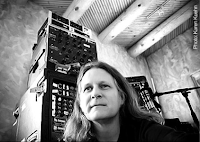 The Who's "Baba O'Riley" is one of the most played tracks in the entire band's catalog, to the point were just about every fan (and non-fan's alike) know each note and part by heart.
The Who's "Baba O'Riley" is one of the most played tracks in the entire band's catalog, to the point were just about every fan (and non-fan's alike) know each note and part by heart.That's why today's isolated track is so cool. It strips away the arpeggiated synthesizer and, in some parts, the piano, to give you a clear listen as to what's going on deep inside the mix. Here are some things to listen for:
1. The reverb on the vocal is pretty short, unlike many Who mixes. It's also delayed so the vocal stands out a bit more.
2. The drums are in stereo, but have an unusual balance, with the snare and most of the kit leaning right and the ride and a crash leaning left. On the tom fill at 1:33 you can hear the rack tom on the left as well. Keith Moon also rarely plays the hat during the song, instead bashing the cymbals throughout, something that a producer would no doubt change today.
3. The big guitar power chords in the verse (0:51) are doubled and maybe even tripled, which you don't notice in the full mix.
4. The outro starting at 3:11 sounds much different without the violin. You definitely get to appreciate Moon's prowess with his dynamics and machine gun snare roll.






